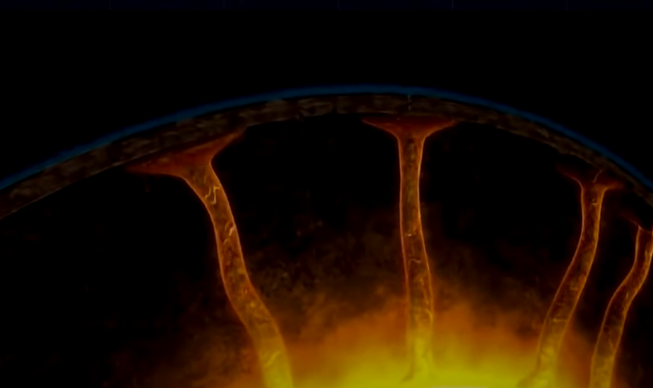Numerous people have seen the power of volcanoes, but I'm sure most people have never seen an underwater volcano, especially when it erupts.
I'm sure many people have questions like, how do underwater volcanoes work? Didn't the magma they spewed immediately solidify into rock because of the water? It's a bit more complicated than you might think because of various factors, such as undersea pressure, igneous rocks, and subduction of underwater terrain, but even scientists aren't totally sure how numerous of these processes really work!
In 2020, an underwater volcano rose from the depths of the ocean and suddenly became unusually active, triggering a series of earthquakes that scientists conservatively estimated to be as strong as 85,000! Thus how are the continent in so numerous earthquake survivors at the same time? because of these earthquakes of any region in the world are disastrous, there are numerous places in the world only once an earthquake may cause disastrous consequences, and the special 85000 earthquake is Chile valdivia earthquake. The earthquake swarm does not happen in one day. These swarms began in August 2020 and had practically ceased by November 2020.
The Valdivia earthquake occurred around the Occa Seamount, an active volcano that rises 1,000 meters from the bottom of the Bransfield Channel. The Bransfield Channel is a narrow passage between the South Shetland Islands and the north-west point of Antarctica. According to the theories about the most recent volcanic activity that occurred not long ago, the sea around the mountain in the seawater temperature anomaly happened around the temperature abnormal seamounts live microorganisms and extreme, let scientists find here is not as simple as a surface, and the facts also prove that it is recorded on the continent the strongest earthquake activity.39bet-kết quả bóng đá-kết quả xổ số miền bắc-kèo bóng đá -soi cầu bóng đá-đặt cược
The area has tectonic plates, which were confirmed by a 2018 study, that have been running under the continental plate of Antarctica. The Phoenix plate created a network of fault zones that ran through the Earth's crust and opened additional fissures in different parts of the frozen continent. As a plate slides beneath a continental plate, a trench slowly begins to form. It's a process called subduction, which leads to enhanced volcanic activity. Subduction is a geological process in which the lithosphere of one tectonic plate converges with the lithosphere of another plate, causing a second plate to sink beneath the mantle. For example, the plates of Japan, Indonesia and the Aleutian Islands are subducting.
 But this is the first time it has been observed in Antarctica, because these processes tend to occur on geological timescales, not months at most as humans understand. Scientists were surprised, curious and scared when two continental plates collided on Earth, not knowing what the consequences would be. On the other hand, rocks begin to pile up and form towering mountains, such as the Appalachian Mountains, a phenomenon that causes the Himalayas to rise. It was likely the collision of continental plates that caused the volcano to appear on the Orca Sea Mountain.
But this is the first time it has been observed in Antarctica, because these processes tend to occur on geological timescales, not months at most as humans understand. Scientists were surprised, curious and scared when two continental plates collided on Earth, not knowing what the consequences would be. On the other hand, rocks begin to pile up and form towering mountains, such as the Appalachian Mountains, a phenomenon that causes the Himalayas to rise. It was likely the collision of continental plates that caused the volcano to appear on the Orca Sea Mountain.
Scientists believe earthquakes are triggered by hot magma, a phenomenon called magma intrusion. Magma intrusion occurs when igneous rocks crystallize into solid rock. The pressure from underground builds up until the magma is forced across the ocean floor. Mid-ocean ridges form in the outer regions of the plates, and they can be as tall as 40,000 miles deep into the Earth. In fact, the ocean floor was formed by mid-ocean ridges, as lava erupted from the center of these joints and cooled by tectonic water pressure plates eventually formed at the ridges and were destroyed miles away as they were squeezed by land material and melted back into the magma.
Of course, scientists don't really see these earthquakes, so they don't understand exactly what's going on, so they have to use instruments to measure them. But even on one of the world's most remote continents, these instruments are powerful enough to detect the smallest earthquakes. But after 85, 000 earthquakes, scientists were surprised to find that the corresponding upper layer, King George Island, had moved only 10 centimeters, and only 8 centimeters of that shift was directly related to the earthquake. What may be actually moving King George Island is the movement of magma beneath it.
Scientists speculate that these powerful earthquakes triggered faults that lowered pressure on the mid-ocean ridge, causing magma to permeate and induce displacement. Until scientists have sufficient technology to dive to the bottom and come back safely, we don't understand what underwater volcanoes look like. Although there is no evidence of volcanic eruptions, it must be admitted that they are among the most horrific natural disasters in the world!